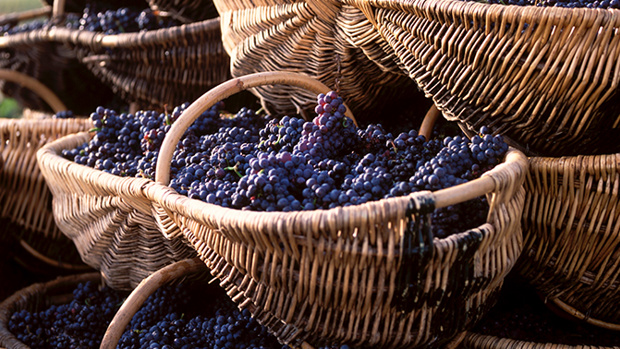Julie Harrison - The Vine Growth Cycle
- Publish Date
- Friday, 5 May 2017, 11:49PM

Photo: Getty Images
- Author
- By Julie Harrison
The grapevine is a perennial plant and you know that spring is in the air when a vineyard suddenly develops a subtle green tinge meaning that the dead looking vines of winter are bursting into life. This is appropriately described as budburst and is bought on by an increase in soil and air temperature. From these buds small shoots form, which sprout leaves and turn the vineyard very quickly from a dull brown to vibrant green. At this stage these delicate shoots are very susceptible to frost, especially in cooler regions. The future bunch of grapes or inflorescence develops over the next few weeks until flowering. At flowering, pollination and fertilisation of the grapevine occurs. Again this is a critical stage in regard to weather. The more flowers that are fertilised the bigger the crop and weather and vine stress all can have an affect on this.
Straight after flowering you come to fruit set which is where the fertilised flower develops into tiny grape and you now have a mini version of a bunch of grapes. The next period of development is pre-veraison or the lag phase where there is very little change in the volume or weight of the berry but all sorts of developmental stuff is nevertheless going on inside. At this point in time all grapes are small, hard and green and are high in acidity and very low in sugar.
Things start to get a bit more interesting mid summer when veraison arrives. This is when you start to see a colour change from green to red for red grapes and a more subtle change from green to green/gold for white grapes. Grapes do not ripen uniformly and even within a bunch of a red variety you will find some red grapes and some green depending on shading and exposure to sunlight. As well as colour change the grapes get larger and soften. There is accumulation of sugars as well as the conversion of malic acid to the weaker tartaric acid meaning the berries become less acidic and sweeter. Tannins soften and some flavour and aroma compounds reduce whilst others develop as he grape ripens and takes on the characteristics of its variety. Unfortunately once veraison begins the local bird population notice the colour change and become a real problem for the grape grower. Some vineyards net the vines to prevent bird damage and others employ tools such as gas guns to scare off the birds, turning the vineyard from a tranquil location to sounding like a war zone.
Different varieties go through all these stages at different times with Chardonnay and Pinot Noir springing into life early compared to Cabernet Sauvignon which is a late bloomer. For vineyards with a number of different varieties vintage is a staggered affair with early varieties being ready for picking in late February and later varieties hanging around until May. Viticulturists employ a range of management techniques to ensure that grapevines are protected as much as is possible at key times especially for those early ripening varieties in cooler climates. This goes as far as hiring helicopters to prevent frost damage in spring when delicate shoots and flowers are vulnerable. The viticulturist also manages the vineyard to ensure optimal yield, ripeness and development of the right flavour components. Nature can be tough and hail or frost can decimate a vineyard so whilst grape growing is a very rewarding occupation it can be very stressful in a fickle climate like that of New Zealand.
About Julie
Julie and soon to be husband, Frenchman, Richard Guerra own Frog in a Barrel Wine Shop and Thirsty Frog Wine Bar in Milford. After developing an interest in wine at Massey University, Julie completed a Post Graduate Diploma in Wine Making and Viticulture at the University of Adelaide and following this worked in Australia for a number of years at Penfold Wines and Andrew Garrett Wines.
Travelling in Europe Julie developed an interest in European wines and now Richard and Julie import wine from France to sell in their shop and bar. Julie is looking forward to sharing her knowledge of local and imported wines.

Take your Radio, Podcasts and Music with you

